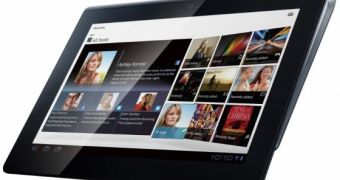The number of companies who choose Google's Android mobile operating system to power their tablet PCs is continuously increasing, while the available range of such devices is continuously expanding.
Sony is the latest company to come to the market with products powered by Honeycomb, two of them, to be more precise, included in the “Sony Tablet” line, and codenamed S1 and S2.
Both these devices were meant to offer a great multimedia experience to their users, as well as an enhanced web browsing experience, and the Android 3.0 platform is there to help.
For starters, we should note that the “Sony Tablet” S1 should land on shelves with 9.4-inch display, while the two “Sony Tablet” S2 would sport two 5.5-inch displays.
The two devices arrive on the market with WiFi and WAN (3G/4G) connectivity capabilities, so that users would benefit from fast access to Internet, for enjoying, among others, digital content on the go, including videos, games and books via Sony’s premium network services.
Moreover, they would also offer access to various Google Mobile Services, as well as to a wide range of applications available for download via the Android Market, courtesy of the new Android 3.0 Honeycomb operating system.
The mobile platform was launched earlier this year on devices like Motorola XOOM or on the T-Mobile G-Slate from LG, being built from the bottom for tablet PCs, which sport larger screens.
“Android 3.0 is a new version of the Android platform with a new holographic user interface that is designed from the ground up for devices with larger screen sizes, particularly tablets.”
“I'm excited about “Sony Tablet” as it will further spur the development of applications and network offerings which users are looking for,” said Andy Rubin, Senior Vice President, Mobile, Google Inc.
The new devices would also come with the PlayStation Suite on board, offering access to high quality first generation PlayStation titles, Sony announced.
The two devices are expected to hit the shelves sometime in fall 2011, the company concluded. Have a look at the video below to learn more on these devices.

 14 DAY TRIAL //
14 DAY TRIAL //